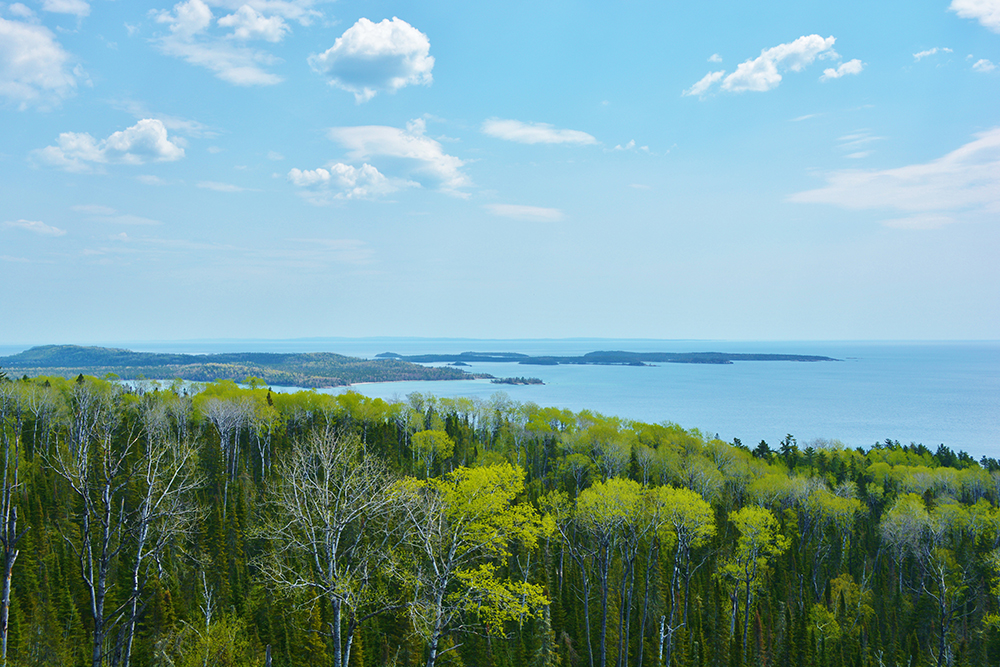In This Issue
We cannot be silent. Black Lives Matter.
We cannot ensure a safe and healthy environment for all people without addressing the racism that causes so much harm and inequity.
Black communities and other communities of color are often burdened with disinvestment, which leads to failing infrastructure. Polluting facilities like power plants, oil and gas operations, and incinerators are often located in or near communities of color. The people who call these communities home often don’t have access to parks, greenspace, or reliable public transportation. And they must often deal with a legacy of expulsive zoning, redlining, and bias, along with indifference from elected officials and policy makers. All of this has a devastating and generational impact on the health of the families in these communities.
This must end. We have to acknowledge and correct the historical harms that have led to clean air and clean water for some and pollution and degraded health for others. Clean Water Action is committed to combating racism and oppression in all forms, both internally and in our society. Read more
Minnesotans Meet with Congressional Delegation to Prioritize Great Lakes Protection and Drinking Water

In March, Clean Water Action led a group of Minnesotans to Washington, D.C. for Great Lakes Day. The group was there to meet with Minnesota’s elected officials to talk about why the Great Lakes must be protected — and the roll Congress can play. The group was joined by nearly 100 other advocates from around the Great Lakes region (Wisconsin, Michigan, Illinois, Indiana, Ohio, Pennsylvania, and New York) who were there to meet with their Members of Congress.
Why did Clean Water go to Washington? To stand up for the Great Lakes. They contain 21% of the Earth’s available fresh water. They are the drinking water source for more than 40 million people and tourism to the Lakes brings in more than 16 billion dollars each year to local economies. They are also a place for people to gather and have fun. For so many of us, they contain memories of great times.
For more than a century we treated our lakes as though they were our sewers and our industrial waste disposal sites and did not always want to face the consequences of these choices. If these are truly the Great Lakes, we need to do better.
We took a fantastic step in that direction in 2010 when the Great Lakes Restoration Initiative (GLRI) was signed into law by President Obama after campaigns led by Clean Water Action, our allies, and members. Since then, we have secured more than 3 billion dollars to restore and protect these treasured lakes for future generations. It has taken a while, but we have finally started to address the many problems that are plagueing the lakes: agricultural pollution, sewer overflows, reckless land development, leaking septic tanks, habitat destruction, and the spread of invasive species.
However, much more is needed to reach our goals. We were in DC to talk about and support the GLRI Act and advocated for significantly increasing federal funding for clean water and safe drinking water programs. The GLRI Act would provide stability for Great Lakes funding for at least five years, increasing the annual funding by $25 million per year until it reaches $475 million annually. The GLRI Act will provide secure and stable funding and will encourage more state and local governments, as well as private businesses, to invest in protection and restoration across the Great Lakes basin.
Congress only acts on addressing these problems like protecting the Great Lakes when they hear from constituents, so we need to make our voices heard. It is going to take many more years to get to the point when all the Great Lakes are once again swimmable, fishable, and safe for all communities to get clean, affordable drinking water. But we will get there — with your support.
2020 Legislative Session Recap
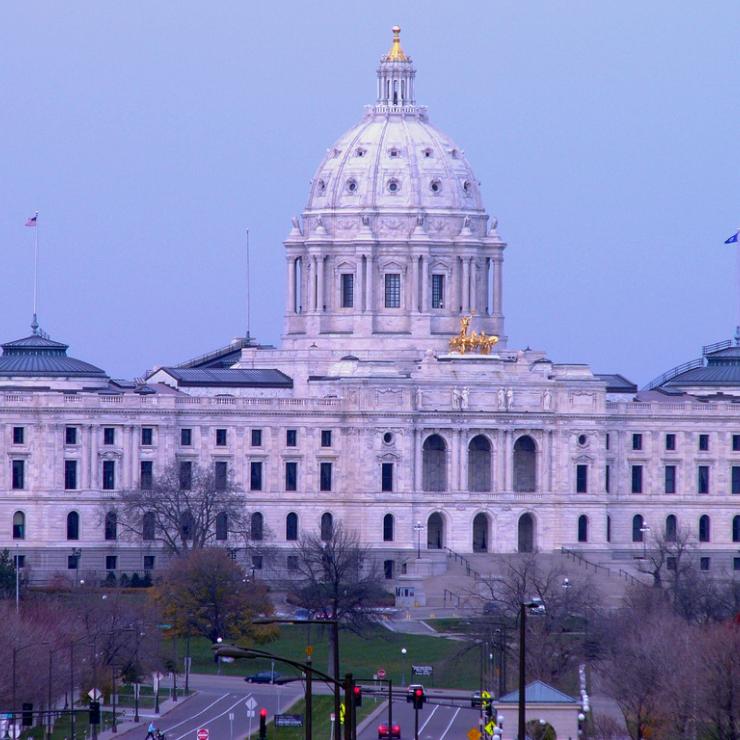
The 2020 session will be remembered as one of the Legislature’s strangest — a divided legislature and a global pandemic made way for unprecedented shifts in how legislators conduct business and how members from came together. Lawmakers approved several COVID-19 relief packages totaling around $500 million. The legislature also, in a nearly unanimous vote, approved a bill banning most uses of a toxic industrial solvent known as trichloroethylene (TCE). The bill, signed into law by Governor Walz was a multiyear effort in which environmental advocates including Clean Water Action, state agencies, and a coalition of impacted community members fought for the first of its kind restrictions in the nation on the toxic chemical known to harm human health.
Unfortunately, in the midst of a looming constitutional deadline in which lawmakers must adjourn, the same bipartisan collaboration didn’t extend much further. Despite a marathon weekend May 16–17, legislative leaders ultimately failed to reach agreements on a number of controversial items, including bonding and environment. Multiple Clean Water legislative priorities, like a bill aiming to reduce chloride contamination in water from winter road-salt and a bill that would ban a family of per and poly-flouroalkyl substances (PFAS) from food packaging were included in each chamber’s respective environment omnibus bills. While both the House and Senate each passed versions of the bill of the floor, time ran out before lawmakers could come to an agreement reconciling the different provisions in each version. The Capital Investment bill also met a similar fate in which House Republicans blocked the 2-billion dollar bill and the Senate failed to pass its $998 million proposal before the clock ran out, meaning both chambers will return for further discussion during a special session which Governor Walz is expected to call on June 12th.
Harmful Algal Blooms and Minnesota’s Lakes
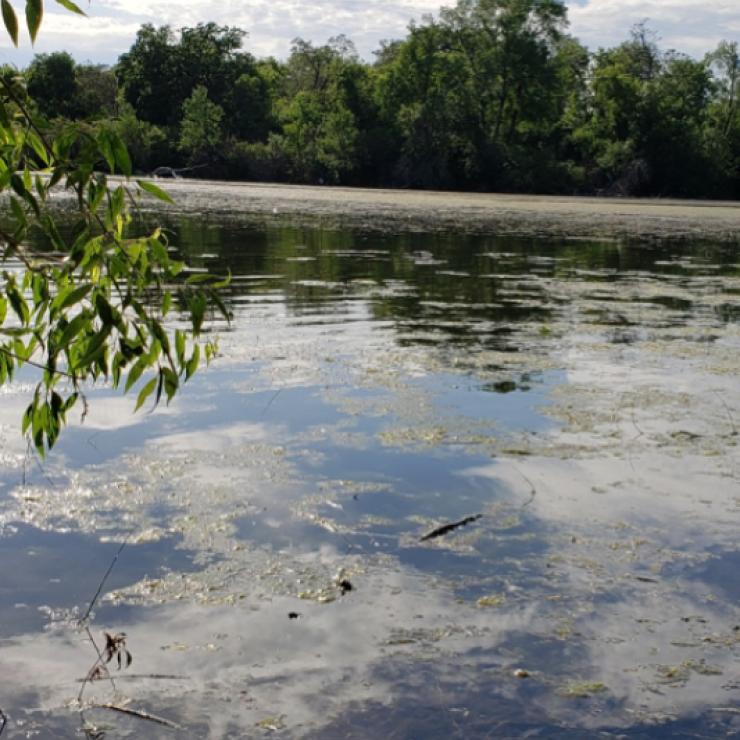
Harmful Algal Blooms (HABs) cause damage to our lakes, harm wildlife, livestock and pets, and threaten public health and drinking water supplies.
Freshwater HABs happen most often where there are high levels of pollutants like nitrogen or phosphorus in warm, still waters like lakes and ponds. These chemicals come from how we use our land: over application of fertilizer to farm fields and lawns, land development near lakes, runoff from city streets or sewage overflows. HABs can also occur in cooler waters too like we are currently experiencing in Minneapolis.
Since May 15, 2020, when the Minneapolis Park and Recreation Board (MPRB) reported on a likely HAB at Cedar Lake, the blue-green algae that can cause these outbreaks has been confirmed at Lake Nokomis, Lake of the Isles, and Cedar Lake. MPRB is advising that people and pets stay out of the water when these blooms are visible. Contrary to its name, blue-green algae can turn lake water into a murky brown color, as it has on these three lakes.
According to the Minnesota Department of Health (MDH), symptoms of illness from blue green algae can include vomiting, diarrhea, rash, eye irritation, cough, sore throat, and headache. Symptoms generally begin several hours up to 2 days after exposure.
Learning More About Harmful Algae Blooms (HABs)
There is no way to tell if an algae bloom is toxic just by looking at it. Therefore, the MDH advises the following:
- For your health, obey warning signs at lakes and other water bodies that have suspected blue green algae outbreaks or other water problems.
- When in doubt, stay out!
- Don’t swim if you can’t see your feet in knee-high water.
- If you’ve recently been in contact with an algae bloom, make sure to wash off with fresh water.
- Don’t let dogs drink or swim in the water. This can be deadly for your beloved animals!
- Contact the MDH or your Park Board to report a suspected HAB in your lake.
For more information on minimizing your risk of exposure to blue-green algae and harmful algal blooms from swimming, boating, or consuming fish, visit the MDH website.
It’s a big bummer when you are at your favorite lake on a hot summer day and you can’t go in the water to cool off and have fun because your lake is polluted with cyanobacteria or other water pollution. There are several ways you can get involved to protect our lakes and drinking water sources. If you have any questions or want to get more involved, please contact Steve Schultz at sschultz@cleanwater.org.
Ask Candidates What They Will Do to Protect Drinking Water
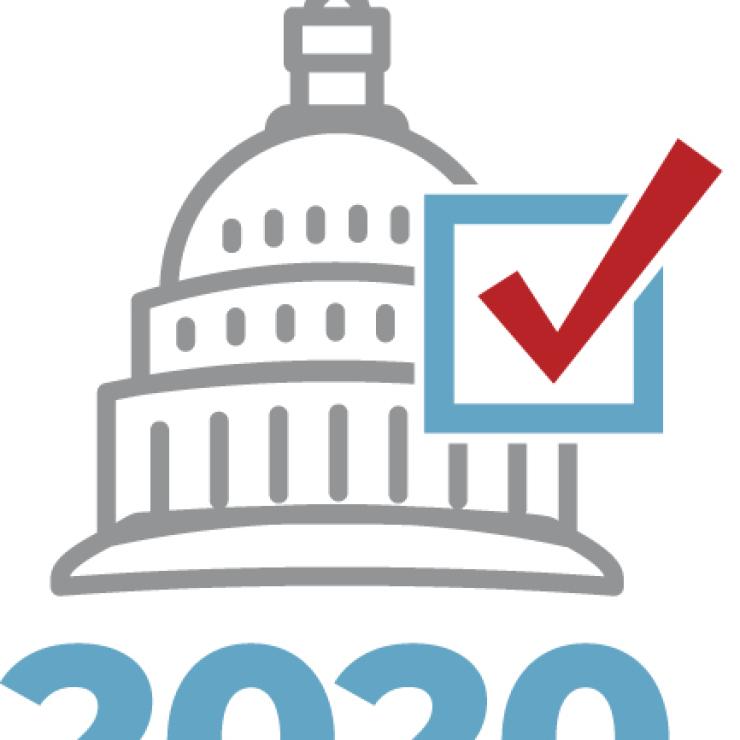
Water is our most vital natural resource, but has long faced an array of threats. Runoff from city streets and lawns; agricultural runoff from farm fields containing nitrates, phosphorus, e. coli, and toxic pesticides; industrial waste from energy production, mining, and manufacturing; sewer overflows; unchecked land development; emerging contaminants such as pharmaceuticals, PFAS, and toxic algae. Climate change exacerbates many of these and will also have devastating effects on our drinking water supplies.
Why is it that protecting the quality of our water been such an uphill battle? One of the biggest reasons is because elected officials do not consider safe and affordable drinking water a priority when they are making decisions — they don’t put drinking water first.
The people we elect in November will help decide how we pay for our drinking water, how much it will cost, and if we start to address the deficit in important infrastructure that delivers our water to our taps. They will decide how much pollution is allowed into our drinking water sources in the first place and how much money is prioritized to protect our drinking water sources. They will decide if everyone has access to safe and affordable drinking water. In short, who we elect to represent us at City Hall, the County Commission, the State Capitol, and in Washington D.C. matters and makes a big difference for our drinking water and our health.
Check out our guide on our website.
The drinking water issues in our guide will be debated this summer and fall leading up to the election in November. When you have a chance, ask the candidates running for office in your community about where they stand on these issues that affect our health every day. Our drinking water depends on who we elect in November!
Don’t let anything stop you from voting!
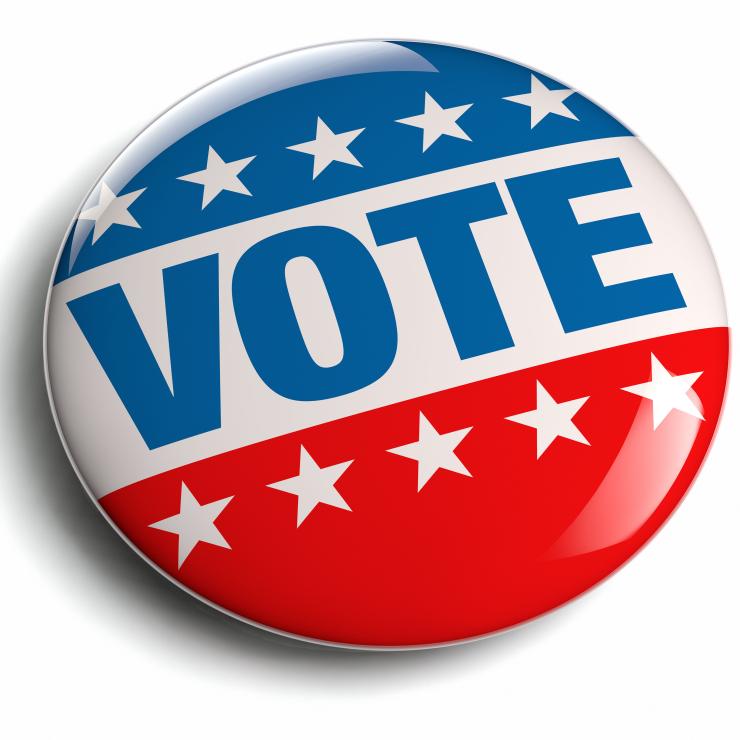
It has never been more evident that ELECTIONS MATTER. And who shows up to vote is also important. To make a difference you have to make sure you are registered, know where and how to vote, and understand where the candidates stand.
This year voting could be difficult thanks to COVID-19. But this year it also matters even more that your vote is counted. Going to the polls on election day is still an option in Minnesota (at least as of the production of this newsletter), but it may not be the best decision for you if you are concerned about your health and safety. And that is OK, but don’t let COVID-19 rob you of your vote.
If you are already a registered voter, you can request an absentee ballot for both the Primary Election on August 11 and for the General Election on November 3, by filling out an application with the Secretary of State. The application is quick and easy and only takes a few minutes.
If you haven’t registered yet, or aren’t sure if you are registered, you can find information about how to verify your registration or how to get registered here.
There will be a lot of confusing information out there as we all try to navigate this new reality. Up-to-date information about all things related to voting in this election can be found here.
And keep an eye on Clean Water Action’s website for more information about where candidates stand and which ones you should consider supporting in this election.
Voting matters, who you vote for matters, make sure you count!
Clean Water Action co-hosts a virtual screening of The Story of Plastic
Thanks to all who were able to “attend” Clean Water Action’s virtual screening and the following Q&A with our very own Jenna Grove, Clean Water’s Legislative Program Coordinator and Stiv Wilson, Executive Producer and co-creator of The Story of Plastic. Stay tuned for a recording of our Q&A!
The Story of Plastic takes a sweeping look at the man-made crisis of plastic pollution and the worldwide effect it has on the health of our planet and the people who inhabit it. Spanning three continents, the film illustrates the ongoing catastrophe: fields full of garbage, veritable mountains of trash, rivers and seas clogged with waste, and skies choked with the poisonous emissions from plastic production and processing. With engaging original animation, archival industry footage beginning in the 1930s, and first-person accounts of the unfolding emergency, the film distills a complex problem that is increasingly affecting the planet’s and its residents’ well-being. If you missed our screening, take a minute and visit www.storyofplastic.org to find more ways to watch the film and get involved!
Clean Water Action will keep fighting for strong local and state action to tackle our plastic problem. You can do your part and take the pledge today to reduce your reliance on single-use disposable products and packaging!
Useful Tips for Reusable Picnics
The weather is getting warmer, which means it is time for picnics and BBQs. That also means more waste from single-use disposable products like paper plastics, plastic utensils, party cups, and more. Most of those items cannot be recycled, especially if they are soiled with food waste. This contributes to a very large waste stream — more than 40% of plastic is used just once before it becomes trash.
We need to rethink single-use products, especially because plastic does not decompose — it eventually breaks down into micro-plastics and can remain in landfills for hundreds of years. We are lucky if it stays in the landfill. A lot of single-use products end up in our rivers, streams, lakes, and the ocean.
You might be asking “what can I do about it?” It turns out, a lot. Eliminating single-use plastic consumption requires change, but it may not be as hard as you think. It just takes a little planning and thoughtfulness.
Here are a few simple solutions that we can do to protect our environment, water, and health every day:
- Consider using durable plates, cups, utensils, and more at your next picnic or event.
- Prepare your food at home and put it in reusable containers to transport it to the event — try to avoid individually wrapped or packaged food
- Use a basket or reusable bag to carry your supplies and food
- If you do use plastic cups and plates at your picnics and BBQs, avoid littering.
- If you can’t use durable, reusable items, look for things that can be recycled or composted. Stay updated on regular recycling routines: Remember, some recycling centers in Minnesota no longer accept black plastic and #6 Polystyrene (Styrofoam).
- Consider having fewer balloons (we know): It is estimated that degrading duration of a balloon takes six months to four years.
- Skip the disposable straws: The average disposable straw is made from the non-renewable source petroleum.
Whether we are a hosting or attending an event, we can continue to celebrate with a “less plastic is best” approach. It might take a little more planning, but isn’t it worth it? Have a great time enjoying our amazing Minnesota summer.
3M Settlement Part 4: The Cost of Clean Drinking Water
This is part 4 in a series of updates on the State of Minnesota’s plans for $850 million awarded in a natural resources damages settlement with 3M Corporation. The first three parts can be found here, here, and here.
More than two years have passed since 3M and the State of Minnesota settled over PFAS contamination in the East metro area. Most of that time has been spent planning the best way to spend the $720 million available to get clean drinking water to the region. And though $17 million has been spent on a few time-sensitive projects, the State has spent a long time in the planning phase.
There are, however, some truly difficult decisions to be made in this process, and factors that require careful consideration. The most critical is the relationship between the Health Index (HI) values and the potential cost of treatment options. There are several individual PFAS chemicals in the contamination plume that all have their own Health Based Values and Health Risk Limits from the Department of Health, and the Health Index is just a way of combining all of those values together. Simply put, if HI is greater than 1.0, there is a potential health risk from one or more PFAS chemicals.
The state needs to decide what it consider to be “clean” drinking water to determine the cost of treatment, including initial capital and 20 years of operation and maintenance. If it decides that any HI value under 1.0 is good enough, that’s pretty achievable with $700 million. However, if it is decided that “clean” water should have an HI value of 0.0 (meaning no more PFAS is detected), then $700 million probably falls severely short. What then? Does the settlement money pay for the initial cost of installing treatment systems and then communities pay for the next 20 years of operating and maintaining those systems? What if HI values change as new science emerges on PFAS chemicals?
These are questions that need answers before the state starts investing heavily in large infrastructure projects in the impacted East metro communities. For now, Clean Water Action is glad the state agencies are taking the time they need to gather input from impacted residents, businesses, and local governments to develop a proper plan.
Clean Water Action will continue to monitor this critical stage of the process and provide you with the information you need. To read more, you can always visit the official Minnesota 3M Settlement page.
